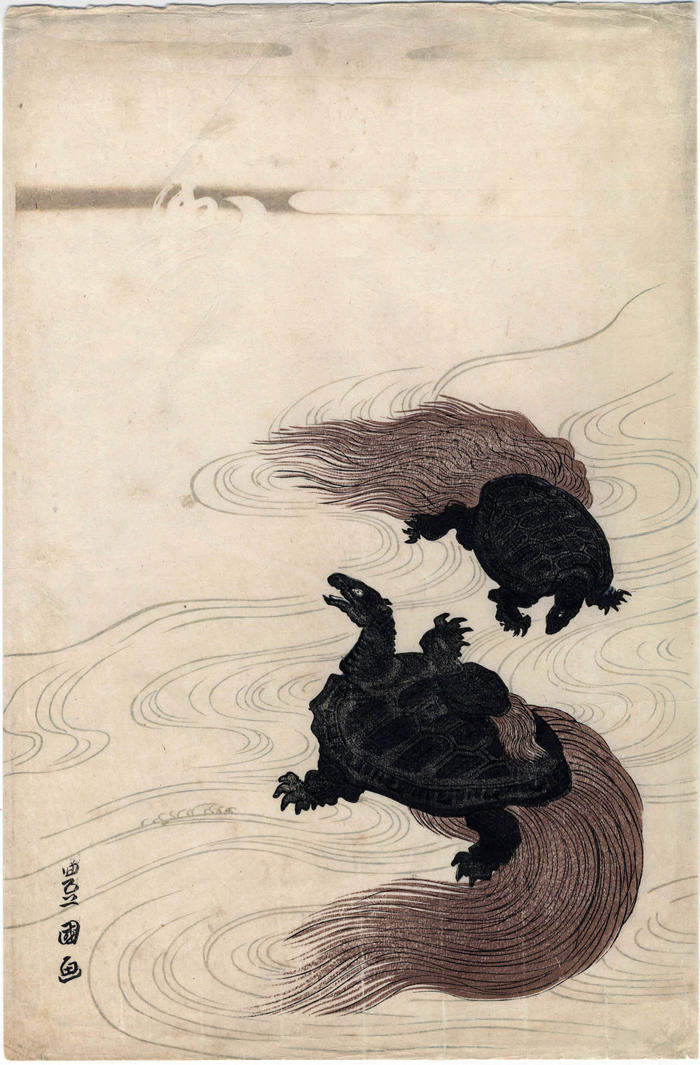Utagawa Toyokuni I (初代歌川豊国) (artist 1769 – 02/24/1825)
Three long-tailed turtles (minogame 蓑亀 or みのがめ) with a message of felicitations - kotobuki (寿)
ca 1800 – 1805
10 in x 15.5 in (Overall dimensions) Japanese color woodblock print
Signed: Toyokuni ga (豊国画)
Musées Royaux d'Art et d'Histoire (via Ritsumeikan University)
This unusual print of 'long-tailed turtles' has no publisher's seal and no censor's seal. It is a bit of an enigma. It is printed and functions very much like a surimono. The embossed character toward the top, slightly left of center, reads: 寿 or 'kotobuki'. This makes a lot of sense since 寿 means 'long-life', 'congratulations', 'felicitations', etc. Of course, while this helps our understanding of this print. it still remains an enigma. Notice, too, that the somewhat dark, horizontal band - a cloud? - in the upper left draws our attention to the embossed character. From the look of it is was printed with a metallic ink, much as found on many surimono and deluxe edition prints.
The subtleties of this print never fail to amaze this viewer. After years of looking at this artwork I finally noticed something I had not seen before. The minogame with its open mouth is exhaling a vapor out of which appears the kotobuki character. Even clicking on this image and enlarging it does not help a great deal in making out this feature, and yet it is there. That is why we have added another detail, the jpeg above and to the left, from a print in the collection of the Harvard Art Museums where you can see this same action taking place, but a little more clearly.
A minogame was thought by some to have only grown its tail of seaweed after 10,000 years.
In a paper delivered on the Urashima tale by Hayashi Kōhei (林 晃平) at the 24th International Research Center for Japanese Studies in 2001 the author notes that the Urashima story didn't begin to appear until the 18th century, while the minogame wasn't popularized until the 17th century.
****
It should be noted that not everyone agrees with Hayashi Kōhei's conclusions. In Tōkaidō Texts and Tales: Tōkaidō gojūsan tsui by Kuniyoshi, Hiroshige, and Kunisada, edited by Andreas Marks, University Press of Florida, 2015, on page 45 it says: "The legend of Urashima is an ancient one, first appearing in the eighth-century anthology Man'yōshū (9: 1740-41), where he is called Urashima of Mizunoue."
****
Often the first kanji character written for the New Year calligraphy was the one for kotobuki. 'May you live a long life.'
surimono - 摺物 (genre)
